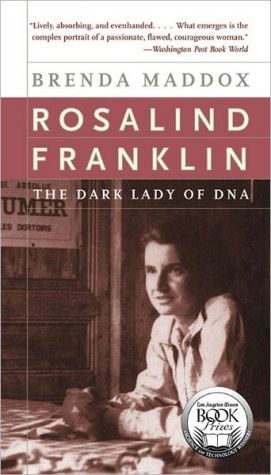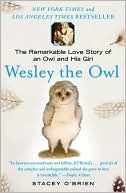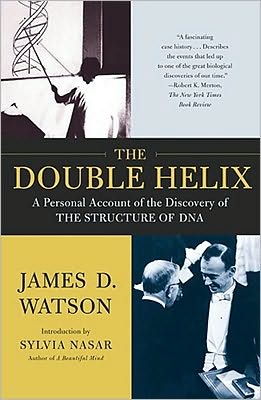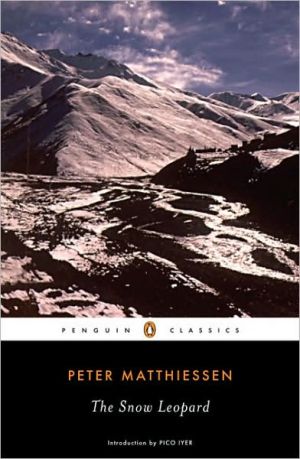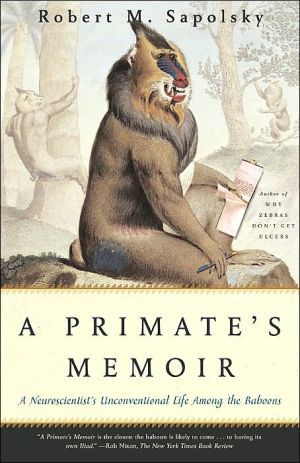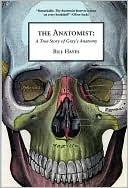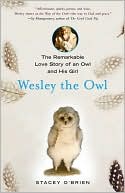Rosalind Franklin: The Dark Lady of DNA
In 1962, Maurice Wilkins, Francis Crick, and James Watson received the Nobel Prize, but it was Rosalind Franklin's data and photographs of DNA that led to their discovery.\ Brenda Maddox tells a powerful story of a remarkably single-minded, forthright, and tempestuous young woman who, at the age of fifteen, decided she was going to be a scientist, but who was airbrushed out of the greatest scientific discovery of the twentieth century.
Search in google:
In 1962, Maurice Wilkins, Francis Crick, and James Watson received the Nobel Prize, but it was Rosalind Franklin's data and photographs of DNA that led to their discovery.Brenda Maddox tells a powerful story of a remarkably single-minded, forthright, and tempestuous young woman who, at the age of fifteen, decided she was going to be a scientist, but who was airbrushed out of the greatest scientific discovery of the twentieth century. Publishers Weekly Her photographs of DNA were called "among the most beautiful X-ray photographs of any substance ever taken," but physical chemist Rosalind Franklin never received due credit for the crucial role these played in the discovery of DNA's structure. In this sympathetic biography, Maddox argues that sexism, egotism and anti-Semitism conspired to marginalize a brilliant and uncompromising young scientist who, though disliked by some colleagues, was a warm and admired friend to many. Franklin was born into a well-to-do Anglo-Jewish family and was educated at Newnham College, Cambridge. After beginning her research career in postwar Paris she moved to Kings College, London, where her famous photographs of DNA were made. These were shown without her knowledge to James Watson, who recognized that they indicated the shape of a double helix and rushed to publish the discovery; with colleagues Francis Crick and Maurice Wilkins, he won the Nobel Prize in 1962. Deeply unhappy at Kings, Rosalind left in 1953 for another lab, where she did important research on viruses, including polio. Her career was cut short when she died of ovarian cancer at age 37. Maddox sees her subject as a wronged woman, but this view seems rather extreme. Maddox (D.H. Lawrence) does not fully explore an essential question raised by the Franklin-Watson conflict: whether methodology and intuition play competing or complementary roles in scientific discovery. Drawing on interviews, published records, and a trove of personal letters to and from Rosalind, Maddox takes pains to illuminate her subject as a gifted scientist and a complex woman, but the author does not entirely dispel the darkness that clings to "the Sylvia Plath of molecular biology." (Oct. 2)
\ Sunday Telegraph"A joy to read."\ \ \ \ \ Booklist"A finely crafted biography."\ \ \ Washington Post Book World"Lively, absorbing and even handed … What emerges is the complex portrait of a passionate, flawed, courageous women."\ \ \ \ \ Science"Able, balanced and well researched."\ \ \ \ \ The Economist"A meticulous biography…[Rosalind Franklin] was the unacknowledged heroine of DNA, the Sylvia Plath of molecular biology."\ \ \ \ \ New York Times Book Review"A sensitive, sympathetic look at a women whose life was greater than the sum if its parts."\ \ \ \ \ Los Angeles Times Book Review"Maddox does justice to her subject as only the best biographers can."\ \ \ \ \ Women's Review of Books"An excellent biography … Maddox’s account of Franklin’s last years and premature death is moving and poignant."\ \ \ \ \ Chicago Tribune"Thoughtful and engaging."\ \ \ \ \ The Independent"A gripping yet nuanced account … a magnificent biography."\ \ \ \ \ San Francisco Chronicle Book Review"Brenda Maddox has done a great service to science and history."\ \ \ \ \ Daily Telegraph (London)"A vivid three-dimensional portrait of a sciencetist and human being … a moving biography."\ \ \ \ \ Chicago Tribune“Thoughtful and engaging.”\ \ \ \ \ Science“Able, balanced and well researched.”\ \ \ \ \ Booklist“A finely crafted biography.”\ \ \ \ \ The Economist“A meticulous biography…[Rosalind Franklin] was the unacknowledged heroine of DNA, the Sylvia Plath of molecular biology.”\ \ \ \ \ The Independent“A gripping yet nuanced account … a magnificent biography.”\ \ \ \ \ Sunday Telegraph“A joy to read.”\ \ \ \ \ New York Times Book Review“A sensitive, sympathetic look at a women whose life was greater than the sum if its parts.”\ \ \ \ \ Daily Telegraph (London)“A vivid three-dimensional portrait of a sciencetist and human being … a moving biography.”\ \ \ \ \ Washington Post Book World“Lively, absorbing and even handed … What emerges is the complex portrait of a passionate, flawed, courageous women.”\ \ \ \ \ Los Angeles Times Book Review“Maddox does justice to her subject as only the best biographers can.”\ \ \ \ \ San Francisco Chronicle Book Review“Brenda Maddox has done a great service to science and history.”\ \ \ \ \ Women's Review of Books“An excellent biography … Maddox’s account of Franklin’s last years and premature death is moving and poignant.”\ \ \ \ \ Publishers WeeklyHer photographs of DNA were called "among the most beautiful X-ray photographs of any substance ever taken," but physical chemist Rosalind Franklin never received due credit for the crucial role these played in the discovery of DNA's structure. In this sympathetic biography, Maddox argues that sexism, egotism and anti-Semitism conspired to marginalize a brilliant and uncompromising young scientist who, though disliked by some colleagues, was a warm and admired friend to many. Franklin was born into a well-to-do Anglo-Jewish family and was educated at Newnham College, Cambridge. After beginning her research career in postwar Paris she moved to Kings College, London, where her famous photographs of DNA were made. These were shown without her knowledge to James Watson, who recognized that they indicated the shape of a double helix and rushed to publish the discovery; with colleagues Francis Crick and Maurice Wilkins, he won the Nobel Prize in 1962. Deeply unhappy at Kings, Rosalind left in 1953 for another lab, where she did important research on viruses, including polio. Her career was cut short when she died of ovarian cancer at age 37. Maddox sees her subject as a wronged woman, but this view seems rather extreme. Maddox (D.H. Lawrence) does not fully explore an essential question raised by the Franklin-Watson conflict: whether methodology and intuition play competing or complementary roles in scientific discovery. Drawing on interviews, published records, and a trove of personal letters to and from Rosalind, Maddox takes pains to illuminate her subject as a gifted scientist and a complex woman, but the author does not entirely dispel the darkness that clings to "the Sylvia Plath of molecular biology." (Oct. 2)\ \ \ \ \ Library JournalRosalind Franklin is known to few, yet she conducted crucial research that led to one of the most significant discoveries of the 20th century-the double helical structure of DNA. Because of her unpublished data and photographs, Francis Crick and James Watson were able to make the requisite connections. Until recently, Franklin was remembered only as the "dark lady"-a stereotypically frustrated and frustrating female scientist, as profiled in Watson's 1968 autobiography, The Double Helix. Maddox (whose D.H. Lawrence won the Whitbread Biography Award and the Los Angeles Times Book Prize) does an excellent job of revisiting Franklin's scientific contributions (to the point of overloading nonscientists) while revealing Franklin's complicated personality. She shows a woman of fiery intellect and fierce independence whom some saw as haughty, though to family and close friends she was warm and devoted. Maddox displays a unique voice in recounting Franklin's story, using letters written to family and friends for much of the text. Her voice subtly draws us in while holding us at arm's length, much like Franklin herself. By the end, the reader is bristling that Franklin should be mostly forgotten, but this biography provides some recompense. Recommended for public libraries with science collections and all academic libraries. [Previewed in Prepub Alert, LJ 6/15/02.]-Marianne Stowell Bracke, Univ. of Arizona Libs., Tucson Copyright 2002 Cahners Business Information.\ \ \ \ \ Kirkus ReviewsThis engagingly direct biography of Franklin encapsulates her vital contributions to science and in particular the deciphering of DNA while providing a durable portrait of a forceful personality. \ Maddox (D.H. Lawrence, 1994, etc.) doesn't take the combative, defensive tack that previous works in Franklin's defense have affected. She believes Franklin's work speaks for itself, and it does, though often through the dark matter of physical chemistry, which Maddox presents with as admirably accessible a touch as possible for the lay audience. Of course, the crux of the story revolves around her contribution to the understanding of the structure of DNA: her x-ray photograph was very much a part of the a-ha! that prompted Watson and Crick's double-helix formulation, even if she was not given credit at the time, but then neither were others who provided crucial insights, from Oswald Avery to Jerry Donohue. Just as interested as Maddox is in the professional work of Franklin—who also gained renown for her work on the chemistry of coal and on the tobacco mosaic virus—she is fascinated by Franklin's character, which could be prickly, reserved, suspicious, highly territorial, and abrupt. Franklin was a Jewish woman scientist from a well-to-do family, a highly suspect creature when it came to the English academic establishment, which was hardly a supportive environment for her. She was unafraid of speaking her mind yet lacking confidence and wary of her intuitions, fought tooth and nail for funding, was solitary, confrontational when cornered, a social innocent who had made science the core of her emotional life. She did have a personal life, well detailed by Maddox, with friends and travels.Importantly, she received considerable recognition for her work; Maddox regards the notion that she was crushed by the DNA ballyhoo as ridiculous. Franklin went on to do her best work thereafter, never accepting a role as "the Sylvia Plath of molecular biology."\ At once a scientific exploration and a personal history, Maddox's biography is inviting and ultimately satisfying. (16 pages b&w photos)\ \ \
